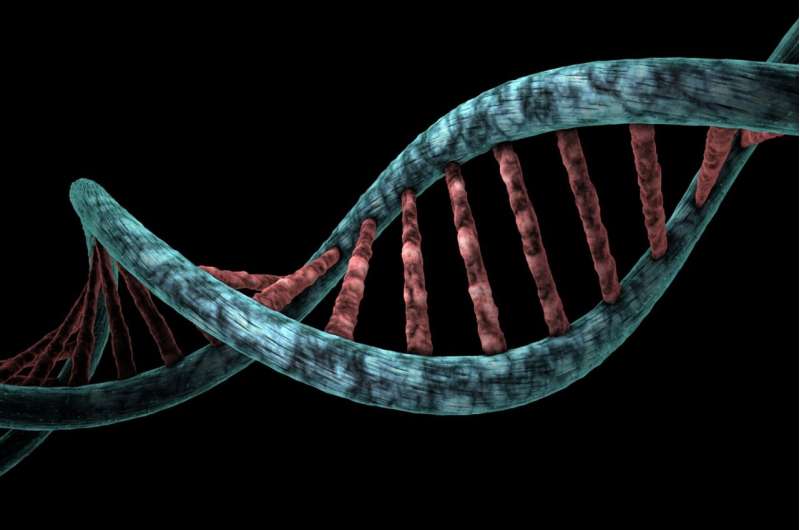May 5, 2022 report
DNA analysis of remains found in Norman Neolithic monumental cemetery suggest a patrilineal community

A team of researchers affiliated with several institutions in France and Germany has conducted a DNA analysis of remains found at the Neolithic cemetery Fleury-sur-Orne near Caen and found that it likely represents evidence of a patrilineal community. In their paper published in Proceedings of the National Academy of Sciences, the group describes their analysis of tissue recovered from bones in the long barrow graves and what it showed them about the makeup of the people who once lived there.
A Neolithic cemetery was discovered at Fleury-sur-Orne near Caen in the 1960s after researchers analyzed pictures taken from aircraft. It is located in what is now known as Normandy—a region in the northwest corner of France. The cemetery was found to be of the long barrow grave type, where long channels had been dug into the ground and then covered with enough dirt to create a mound. The site currently covers approximately 24 hectares with barrows as long as 372 meters. Excavations at the site have been ongoing since 2014. Researchers have uncovered monuments and multiple barrow graves. Prior research has shown the bodies in the barrows date to approximately 4600 to 4300 BCE making them some of the oldest cemetery structures in western Europe. The people who lived in the area were known as the Cerny culture.
In this new effort, the researchers focused their attention on the remains of 19 skeletons found at the site, 14 of which were preserved well enough to allow for DNA analysis. All of the skeletons were from deceased males, except one. Their analysis showed that none of the people buried in the barrow were related to one another except one pair—a father and son. They also noted that the female buried in the barrow was surrounded by arrowheads, which the researchers note, suggests she was likely considered to be masculine enough to be buried with the men.
The researchers suggest their findings indicate that the society of people living there was likely patrilineal in nature, and that the bodies of the males in the cemetery may have represented male elites.
More information: Maïté Rivollat et al, Ancient DNA gives new insights into a Norman Neolithic monumental cemetery dedicated to male elites, Proceedings of the National Academy of Sciences (2022). DOI: 10.1073/pnas.2120786119
Journal information: Proceedings of the National Academy of Sciences
© 2022 Science X Network




















